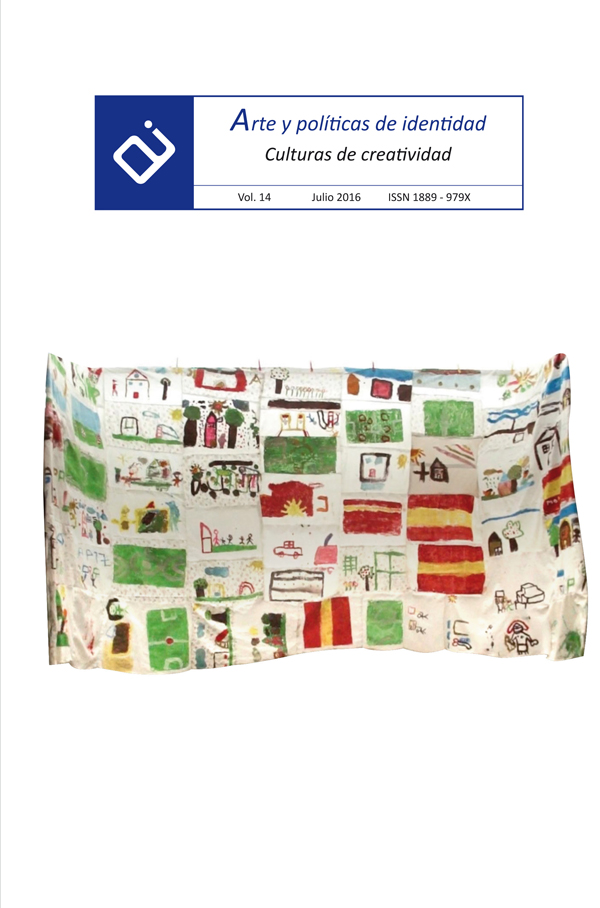Playing with Modern Art
Abstract
Modern Art has directed an aesthetic look to children’s life, appropriating their experimental processes.The artistics avant-gardes camped in a pre-language territory, where all senses are preserved, ready to discover a world without names –the names cover the world; to dis-cover the word names must be set aside. Because where language exists, there is no room for art: In order to give preference to perception, art must be unlinked from that which is linguistic, from codified communication, from the established system in which one creates and one receives statements.
In art, perception is an end in itself. Art is the procedure that seeks a reflective perception: it can only emerge when the communicative act is blocked and obstructed, and the perceptive act is prolonged. Where can we find this state before language and from which art can emerge?
It is in the child who discovers a world full of nameless things. Modern art is a child who plays, and who proposes, who was previously sentenced to be a spectator, to participate in the game.
Downloads
-
Abstract471
-
PDF (Español (España))455
References
Agazzi, R. (1973). Come intendo il museo didattico nell’educazione dell’infancia e della fanciullezza. Brescia: La Scuola Editrice.
Argan, C. (1991). El arte moderno. Madrid: Akal.
Arnheim, R. (1977). Arte y percepción visual. Psicología de la visión creadora. Buenos Aires: Editorial Universitaria de Buenos Aires.
Ball, H. (1946). Die Flucht aus der Zeit. Lucerna: Josef Stocker.
Baudelaire, C. (1976). Le Peintre de la vie moderne. En C. Baudelaire, Œuvres complètes (pp. 683-725). Paris: Gallimard.
Daix, P. (2002). Historia cultural del arte moderno: El siglo XX. Madrid: Cátedra.
Dolci, M. (2006). Preguntes de teatre i art a l’escola. Infància: educar de 0 a 6 anys, 153, 6-9.
Cage, J. (2007). Para los pájaros. México: Alias.
Caillois, R. (2015). Los juegos y los hombres. La máscara y el vértigo. Madrid: Fondo de Cultura Económica de España.
Foster, H.; Krauss, R.; Bois, Y.-A.; Buloch, B. H. D. (2006). Arte desde 1900. Modernidad, antimodernidad, posmodernidad. Madrid: Akal.
Huizinga J. (2004). Homo ludens. Alianza, Madrid.
Osterrieth, P. (1974). Psicología infantil. Madrid: Morata.
Quetglas, J. (2001). Pasado a limpio, II. Valencia: Pre-Textos.
Quetglas, J. (15 de febrero de 2015). Espais de joc. Mallorca: AraBalears.
Sklovsky, V. (1970). El arte como artificio. En T. Todorov, Teoría de la literatura de los formalistas rusos (pp. 55-70). México: Siglo XXI.
Vigotsky, L. (2003). La imaginación y el arte en la infancia. Madrid: Akal.
Works published in this journal are subject to the following terms:
- The Service of Publications from the University of Murcia (publishing house) keeps the published works’ copyrights, and favors and allows the reuse of these works under the license indicated in point 2.
- Works are published in the journal’s online edition under the license Creative Commons Reconocimiento-NoComercial-SinObraDerivada 3.0 España(texto legal). They can be copied, used, disseminated, transmitted and publicly exhibited, as long as: i) the author and original source of publication are cited (journal, publishing house and work’s URL); ii) they are not used for commercial purposes; iii) the existence and specifications of this license are mentioned.
3. Conditions for auto-file. It is allowed and encouraged that authors share electronically their pre-print version (the pre-reviewed version) and /or post-print version (the reviewed and accepted version) of their Works before the publication, since it promotes its circulation and dissemination. RoMEO color: green.










